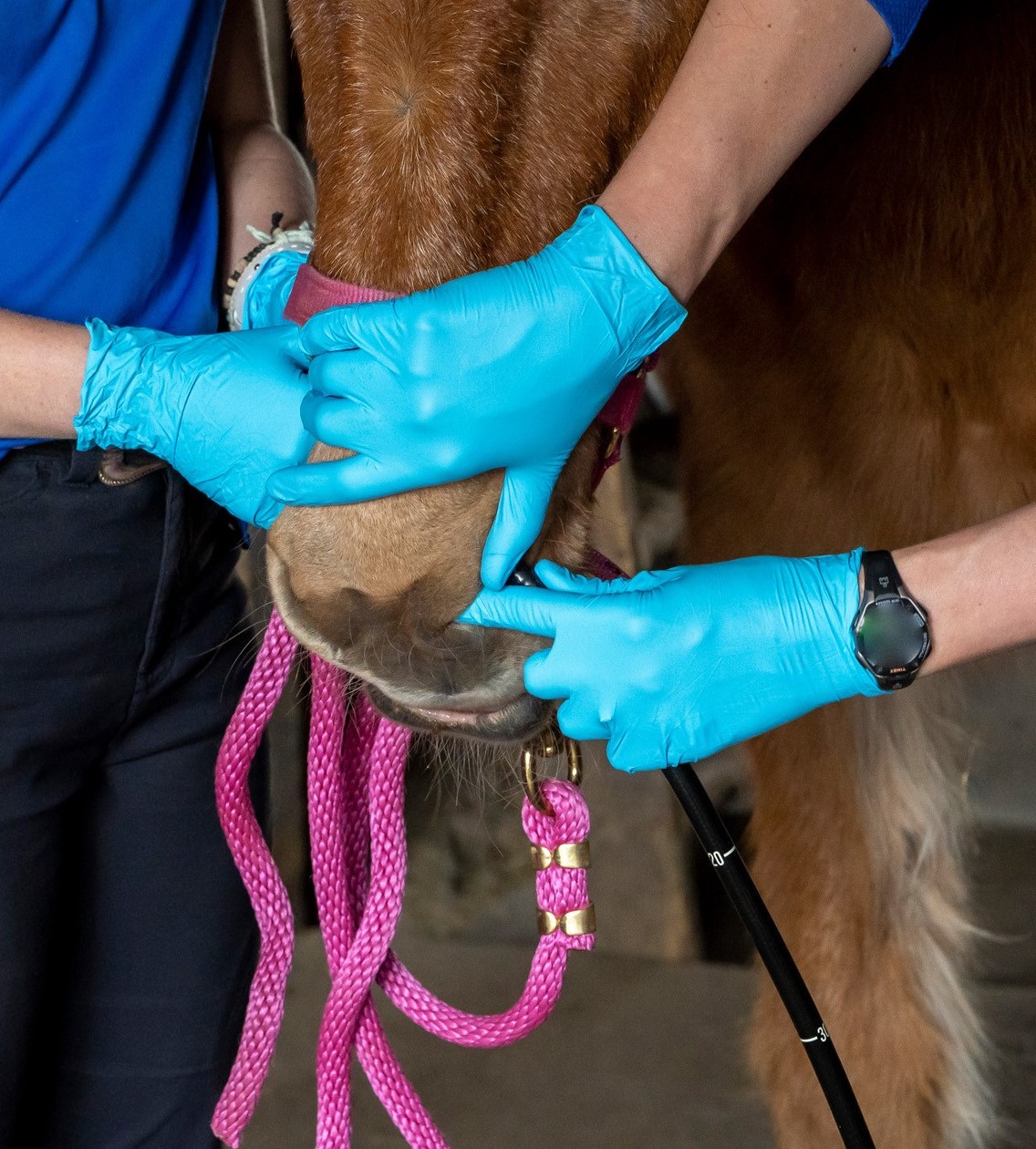Have you ever wondered what the inside of your horse’s stomach looks like? Have you gone back and forth speculating on whether he or she has ulcers or not? If so, no need to wonder any longer! EquidDoc can help answer these questions and provide valuable information on the health of your horse.

G astroscopy is a procedure used to view the inside of your horse’s stomach and is the only way to definitively diagnose a horse with stomach ulcers. The procedure involves passing a 10-foot-long endoscope/camera into the stomach. This tiny camera allows us to view all major parts of the horse’s stomach and look for ulcers, as well as other abnormalities such as irritation, parasites, tumors, and feed impactions. The procedure is not painful, but your horse will receive sedation to minimize stress and pass the camera safely into the stomach. The scope is passed up the nose to the esophagus and down into the stomach. Air and water from the scope are used to distend and rinse the stomach so the gastric surface can be seen. The horse must be fasted for the appointment and the exam typically takes 15 to 30 minutes once the camera is in place.

Stomach ulcers are very common in horses and can cause a variety of symptoms including behavior changes, resentment to tightening girth, performance issues under saddle, decreased appetite, poor body condition, and colic. While traditionally it was thought that ulcers were a d isease of racehorses or highly stressed animals, modern advances in our ability to diagnose this disease have shown that they can appear in any horse at any time, regardless of the animal’s age, job, or environment. While certain risk factors include travel, showing, prolonged stall rest, stressful experiences, low forage and water intake, and frequent use of some medications such as Bute or Banamine, we have also diagnosed severe ulcers in calm horses living alone on private property and enjoying a peaceful retirement. For this reason, we recommend that any horse showing signs of ulcers have an evaluation by one of our EquidDoc veterinarians.
Thankfully if irritation or ulcers are found within the stomach the treatment is both easy to administer and effective. While some mild ulcers may heal within a couple of weeks, some ulcers are very stubborn and can take several months to heal. For this reason, EquidDoc recommends a recheck scope 3-6 weeks into treatment to ensure that all ulcers have healed, and treatment can be safely stopped.
If you have noticed any of the symptoms listed above, want to know whether your horse is afflicted with ulcers, or are just curious about the overall state and health of your horse’s stomach, please call EquidDoc Veterinary Services at (508) 885-4205 to schedule your horse’s gastroscopy today!

